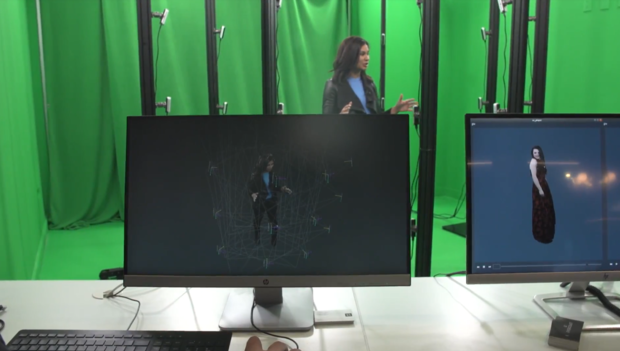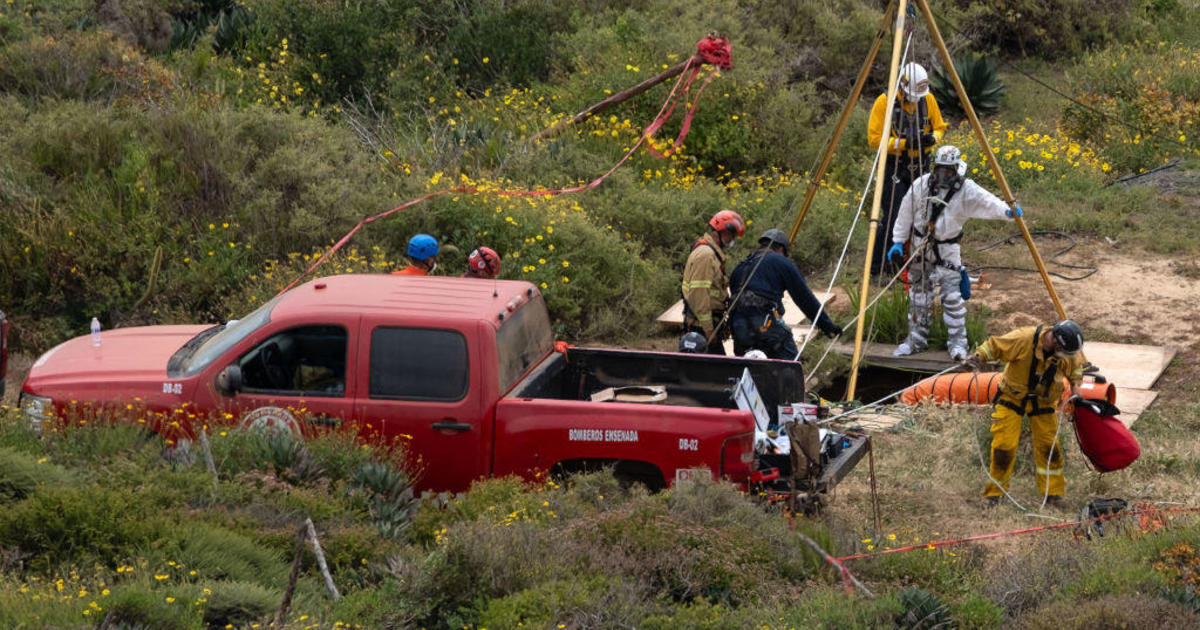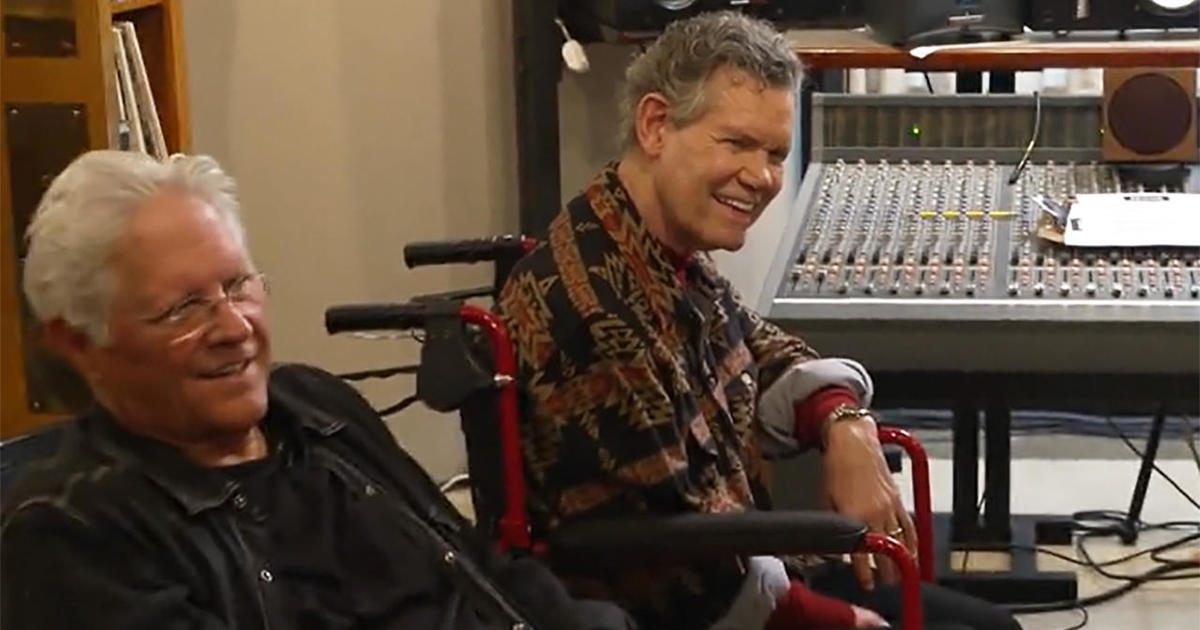What a 5G world could look like: 3D holograms, faster AI – and new security concerns
5G is the next generation of wireless connectivity that promises to enable faster download times and increase the responsiveness of all our connected devices. Given the advances this technology could bring, there is an international race on to build 5G networks. This week, the industry is buzzing with 5G advances being announced at the annual Mobile World Congress trade show in Barcelona.
There's a lot of hype surrounding the future of 5G, and also a lot of questions about what a 5G-enabled world would really mean for consumers. What could we do with super-fast wireless that isn't really possible now?
We got a glimpse of what that reality could be by visiting Alley, a coworking space in lower Manhattan powered by Verizon, where innovators and startups utilize in-house 5G connectivity.
"Some of the challenges around deploying 5G are making sure that the tech is ready for 5G," said Noelle Tassey, the COO of Alley. "That's something that we're really focused on here at Alley, in terms of giving startups pre-commercial access to 5G nodes, so that when 5G is deployed, there's going to be technology ready to take full advantage of that increased capacity."
Evercoast, one of the companies there, says they want to make it easier for anyone to create lifelike holograms. We got a firsthand look at how 5G enables their volumetric video-capture technology to create a 3D hologram of a subject. Volumetric video — sometimes called 4D video — is a video technique that generates realistic-looking, moving dimensional figures.
The volumetric video market is expected to grow from $578 million in 2018 to nearly $2.8 billion by 2023, according to Research and Markets. Demand is growing as this technology provides opportunities in a wide range of applications, from gaming to filmmaking to fashion to medical use. Tech giants such as Microsoft and Intel have invested in building out their own volumetric video technology.
Standing inside Evercoast's volumetric room, you're surrounded by about two dozen cameras on metal poles. Rather than 360-degree video which is an "inside-out" process, with the cameras looking out on the world and capturing the world as we see it, volumetric video is an "outside-in" process, with the cameras capturing the subject from all angles in real-time 3D scans.
Images captured are then uploaded to servers in the cloud to process, and the data collected is rendered. This is where 5G comes in. Normally, that amount of data could take hours or possibly even days to process.
After the Evercoast cameras captured my image, I watched as the computer processed it all, sending notifications to founders Ben Nunez and Sebastian Marino along the way. Approximately 18 minutes later, I saw a three-dimensional image of myself pop up in a glass box about 15 square inches in size. That initial render functions as a playback mode of sorts, enabling Evercoast to see a version of their capture.
Ben Nunez, the CEO of Evercoast, says the technology could be used in many ways, from making esports more interactive to building a virtual closet for "trying on" clothes. It could potentially be used in the medical field for doctors to receive a more holistic view of a patient before they arrive in the hospital.
"We've sort of spent our lives in 2D, in 2D screens. What 5G and some of these advanced technologies is going enable is a transition to 3D, which is how our eyes see, so they all sort of come together in gaming, in first responders, in content in the future," said Nunez.
A key part of improving nascent 5G-enabled tech is giving companies a place to develop, evolve and test out their products. 5G-enabled workspaces allow them to get a truer sense of what they can accomplish on a network that's many times faster than 3G or 4G.
"Today, the 4G networks and the Wi-Fi networks are not able to support the full capabilities of the technology, but combine 5G with computer vision, AI, in the cloud, and you'll be able to support a lot more applications that consumers will be able to use on their smartphones initially, and eventually over different types of devices such as smart glasses, AR glasses and other IoT devices," says Sanyogita Shamsunder, vice president of 5G Labs and Innovation at Verizon.
What else 5G could do: Faster AI, mixed reality
If 5G infrastructure is effectively built out, volumetric video capture is not the only technology that could have wide-ranging applications. 5G-enabled mixed reality hardware — like glasses with a digital overlay built in — could also improve access to medical advice or emergency aid to those in remote, inaccessible areas.
For example, a company called ThirdEye makes mixed reality glasses that they say could enable first responders to see views and maps without actually being at a scene.
The low latency, or quick responsiveness, that 5G enables would make artificial intelligence programs faster in processing and responding to information. Second Mind, one of the tech companies working at Alley, is developing software that claims to be able to anticipate information you may need on a phone call and deliver it to users in real-time. And another, Soul Machines, is working on human-like digital characters that can interpret facial expressions and speech. At Alley, we saw a Soul Machines demo where an artificially intelligent program named "Lia" responded to a request to book a hotel.
5G "allows a much cheaper, faster, better technology to actually perform," explained Toby Redshaw, senior VP of Enterprise Innovation and 5G Solutions at Verizon. "Because of the power of super low latency and really fat bandwidth, things like intelligent computer vision, intelligent geo-tagged AR. … This will have not only an engagement and customer impact but also an operational impact to the businesses."
However, before consumers can take advantage of any of these innovations, a 5G network has to be successfully deployed. This takes an enormous amount of infrastructure due to the short millimeter waves 5G uses. By using these waves, a 5G network is utilizing a part of spectrum that's largely unoccupied, unlike the more cluttered space being used by current wireless.
"Millimeter wave spectrum can provide massive data bandwidths... we're talking gigabits per second of speed, but the tradeoff is, the higher you go up in frequency, the less distance you get in terms of coverage," said Samsung's Alok Shah, VP of Networks Strategy, Business Development & Marketing.
Those smaller waves can also get blocked by atmospheric interference such as weather or physical obstacles like buildings. It's likely, then, that transmitters for 5G will need to be much more frequent than current cell towers. Because of their size, they could be embedded on lampposts or rooftops in densely populated areas. There would be more challenges in rural areas, where the waves would need to travel longer distances. Carriers are working through these issues with solutions like beam-forming, which redirects the waves, and using a lower frequency spectrum to utilize longer waves.
New technology, new concerns
As this technology develops, so do concerns about what it would mean for users' privacy and security. Software that can predict our next move and live in our homes through the Internet of Things would have enormous access to private information.
Shah says there are "valid areas where we, as an industry, need to be smart and careful about data privacy, about consumer access and ensuring that we're trained data effectively like carefully and properly."
Nunez of Evercoast also warned about the potential dangers of 3D-image doctoring. More sophisticated and realistic video technology could allow for malicious users to manipulate images and create more convincing fakes. As this technology advances, there's a risk that "deepfakes" — digitally manipulated videos that make it look like a person did or said something that never actually happened — may become almost impossible to tell from the real thing.
Even beyond the technology we can see today at 5G-enabled spaces like Alley, industry experts say there are more advances to come that we can't even imagine right now.
"The reality is that we probably don't know what the really exciting use cases are going to be for this combination of 5G and AI and IoT. I think there are some kids in high school somewhere that are going to come up with the real innovations that transform people's lives," said Shah.





